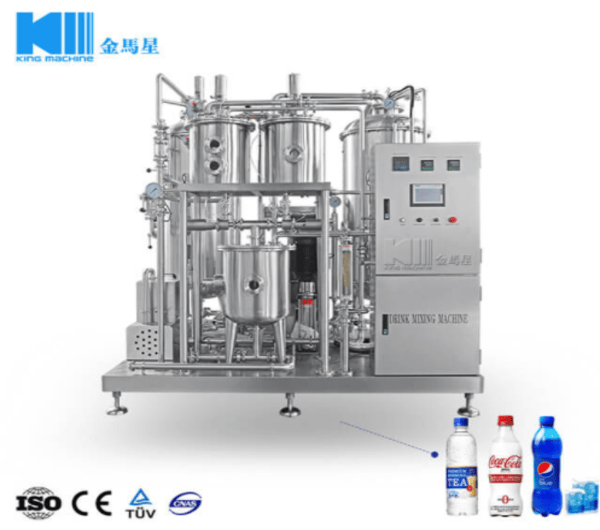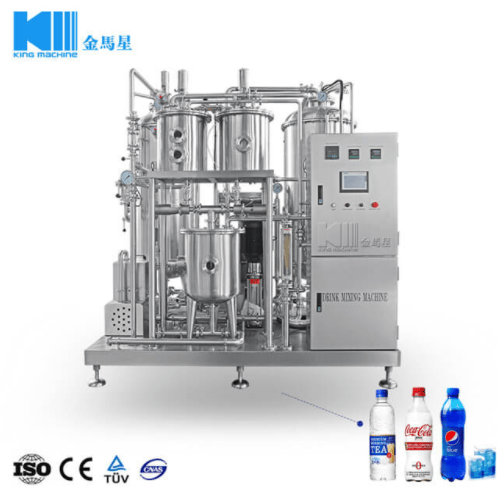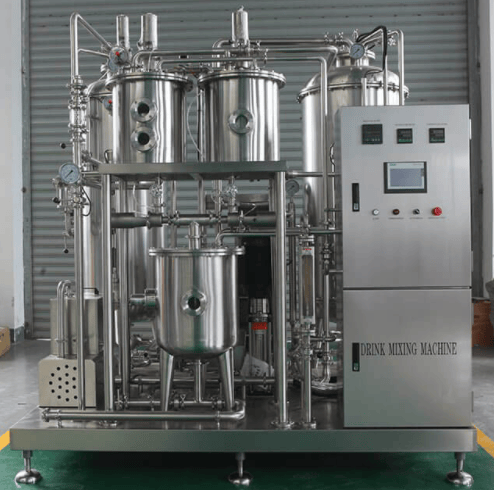News
Site Editor
 Site
https://king-machine.usa72.wondercdn.com/uploads/image/6454bbd2e50a2.png
A pasteurizer or ultra-high temperature processing, a mechanism for injecting carbon (iv) oxide, and the filling line itself comprised the carbonated soft drink (CSD) filling machine.
Site
https://king-machine.usa72.wondercdn.com/uploads/image/6454bbd2e50a2.png
A pasteurizer or ultra-high temperature processing, a mechanism for injecting carbon (iv) oxide, and the filling line itself comprised the carbonated soft drink (CSD) filling machine.
Ingredients and Production Sequence Using Beverage Filling Machine
Views: 2697
Author: Site Editor
Publish Time: 2022-03-14
Origin: Site
Non-water beverages or liquid refreshment made with water and sweeteners such as sugar are known as soft drinks. Carbon (IV) oxide is often found in them.
If a liquid refreshment contains no carbon (IV) oxide, it is referred to as a "still or flat" drink rather than a soft drink. Soft drinks include flavorings, plant or fruit juice, edible plants or fruits, and acid. Soft drinks include mineral water and other similar beverages.
The word "soft" also applies to "value-added commodities" like energy drinks since they employ the same manufacturing method. Liquid refreshment market growth is dependent on where there is a significant demand.
With the addition of sweeteners, the number of "light" liquid refreshment alternatives has increased. As a consequence, sugar replacement in carbonated soft drinks benefits customers by lowering their calorie intake.
A decent carbonated soft drink (CSD) filling machine from a reputed packing equipment manufacturer, on the other hand, can significantly improve the efficiency of your production line.
This brief overview focuses on the soft drink production process, from syrup preparation through packaging.

Production Process of CSD
A reservoir, which is a storage tower for raw ingredients such as coloring, flavoring agents, sugar or sweeteners), a water treatment unit, and a mixer are used in the creation of liquid refreshment.
A pasteurizer or ultra-high temperature processing, a mechanism for injecting carbon (iv) oxide, and the filling line itself comprised the carbonated soft drink (CSD) filling machine.
Syrup Preparation
The foundation of soft drinks is syrup, which is made comprised of water, acid, sugar, coloring, and flavoring chemicals. To make the syrup, dissolve these ingredients in water until it reaches 65°Brix.
Sugar may be dissolved in one of two ways:
• Warm: dissolve the granules at 70–80°C, filter, and cool to 15°C.
• Cold: the granules are dissolved in cold H2O with vigorous stirring, then filtered and pasteurized.
A flow meter is used to inject sugar during manufacture. The flow meter is used to directly measure the density of the sugar content. The sugar value is measured using the mass flow meter (Brix).
The Brix level indicates the amount of sugar in the beverage as a percentage of its total weight. After a successful sugar syrup manufacture, the storage tank should be thoroughly segregated to prevent condensation from forming on the syrup.
This will enable spores in the sugar syrup to grow into live creatures and eliminate microbes.

Soft Drinks Ingredients
The majority of CSD's concerns are related to water. This is due to the likelihood of a chemical reaction between soft drink and water components. The water may also be softened and screened for bacteria.
It's important to remember that the water used in the manufacturing process should be devoid of organic carbon, since this will prevent bacteria from growing. Microbial growth will be accelerated if sugar is added right away.
All thanks to the invention of the carbonated soft drink (CSD) filling machine, which has eliminated the headaches of controlling microbial development in water when sugar is added.
Sugar, which may be delivered in liquid (Syrup form) or granular form, is another component of carbonated soft drinks. The flavor is governed by the sour-sweet ratio.
As a result, acid is often introduced to the product when sugar or sweeteners are added. Citric acid and phosphoric acid are two more chemicals that may be utilized in the manufacturing of cola.
Partner with us for premium beverage filling machine
If you are in need of high-performance Carbonated soft drink filling machine kindly click here to contact us for a purchase or for more information.









